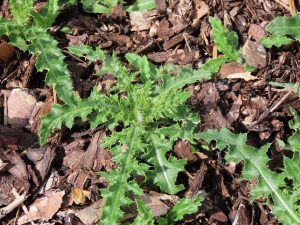Ontario is a great province. But for some reason, our lawns are less grass and much more weed. why are weeds so aggressive in Ontario? Likely because they are aggressive plants that have evolved to survive the winter by doing whatever is necessary including sucking the life out of other weaker plants. Weeds are plants, identical to roses and tulips, they are just stronger, more rugged, weeds are plants that want to survive and who have been surviving for millions of years, overpowering every other plant it comes across so that is can have all the water, all the sunlight and if the host or opposing plant dies? Who cares. This is how weeds work on a biological level. They are dangerous and destructive and will choke your rose bushes to death.
The following is a list of the most common Ontario weeds that grow in lawns to look out for. If you have any of these weeds it’s important you treat them with herbicide. Pulling them out of the ground does not work, they will regrow from the root.
Black Medic (Medicago lupulina)
This is a dark green weed, it grows annually and has square-shaped stems. The plant spreads across a wide area and can choke out whatever weaker plant is surrounded.
Buckhorn Plantain (Plantago lanceolata)
This weed is a perennial that reproduces by seed alone. It has narrow pointed leaves. The plant has a very strong root that allows it to take up groundwater and nutrients rapidly, leaving nothing for any other plant in the immediate area.

This is a weed everyone in Ontario knows. The spiky lettuce shaped leaves of the Canadian thistle is painful to touch and protects it from the cold so it can last further into the winter than non-weed plants. It is very aggressive and can cover a yard and kill all the grass within a summer.
Clover (Trifolium repens)
Everyone loves the four-leaf clover but clover is actually a dangerous weed that can grow in massive amounts and coat a lawn very quickly. They can also cause structural damage if they get too close to a foundation.
Common Mallow (Malva neglecta)
Mallow is a weed with large leaves that are a paler sort of green. They are perennial or biennial and only reproduces by seed. The leaves are kidney-shaped and the long stems allow them to block light like an umbrella over shorter plants.
Crabgrass (Digitaria species)
Crabgrass is the worst. It replaces your grass creating an ugly half and half sort of patchwork lawn. The crabgrass will keep growing and keep killing your lawn unless you stop it. You will likely still have to reseed the lawn, however.
Dandelion (Taraxacum officinale)
This perenial weed is considered by some to be pretty and in its seeding state is a fun toy. You can blow on the seeds, and they will fly away in the wind. This is actually a terrible idea. These thick stocked weeds are one of the biggest killers of lawns in Canada and they can be found everywhere by the thousands. These are also resistant to many domestic herbicides.
Ground Ivy (Glechoma hederacea)
Ground ivy is not the same as Ivey that grows on buildings. It is a dangerous and aggressive pest species and it needs to be dealt with as soon as you see it. The root is very thin and wiery and can penetrate the hardest concrete over many years of growth. If you find this plant near your home you will need to kill it with strong herbicides.
If you have these weeds on your lawn or growing in your garden and domestic herbicides are not working then you should call a professional exterminator to treat the area with commercial herbicides that will protect your garden in the long term.
That being said, the ministry has made all aesthetic only herbicides illegal. So if you have some minor weed growth on your property do not expect a licensed exterminator to deal with it, it’s on you to deal with it using safe domestic herbicides that won’t hurt people or animals who walk on your lawn.

